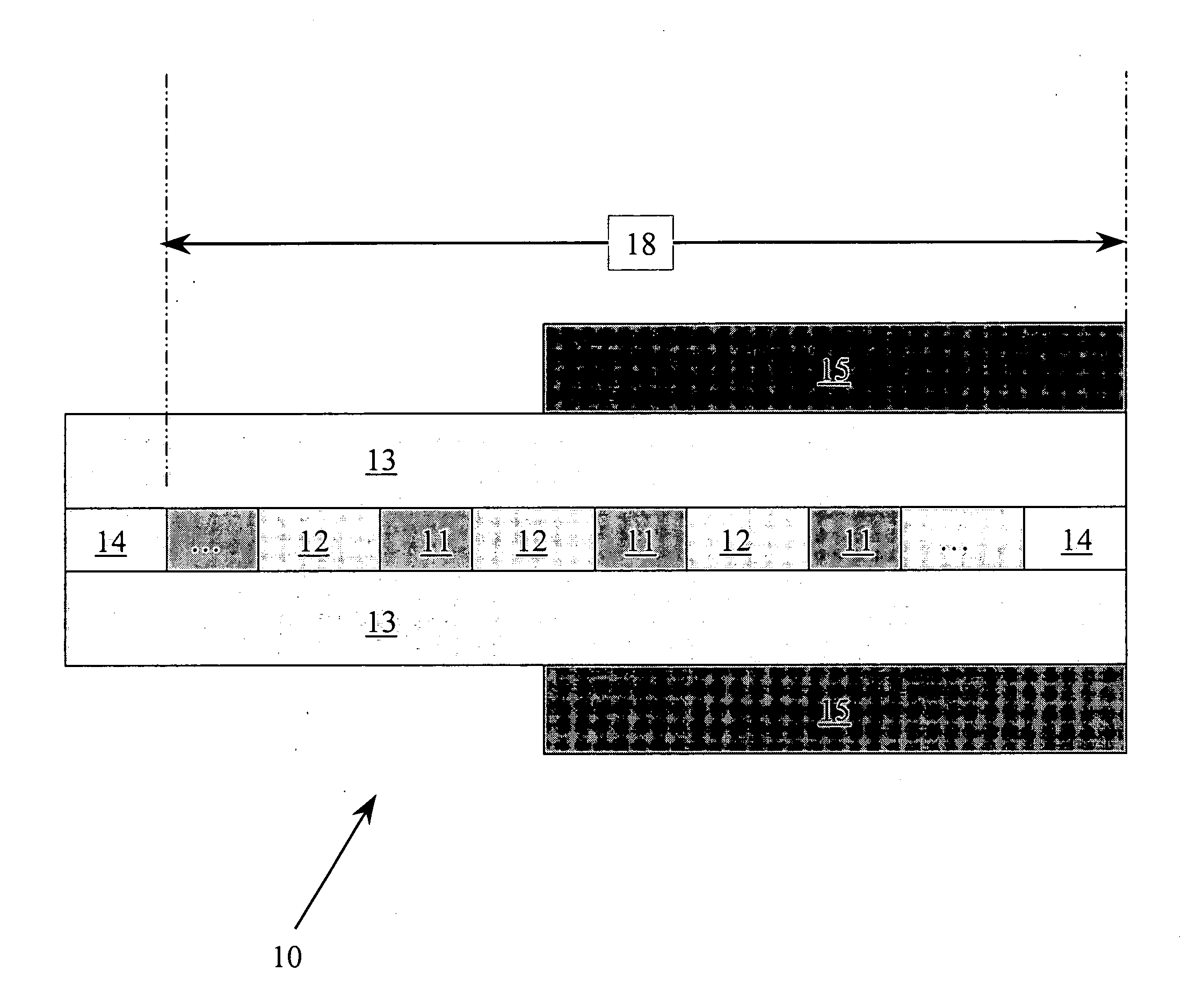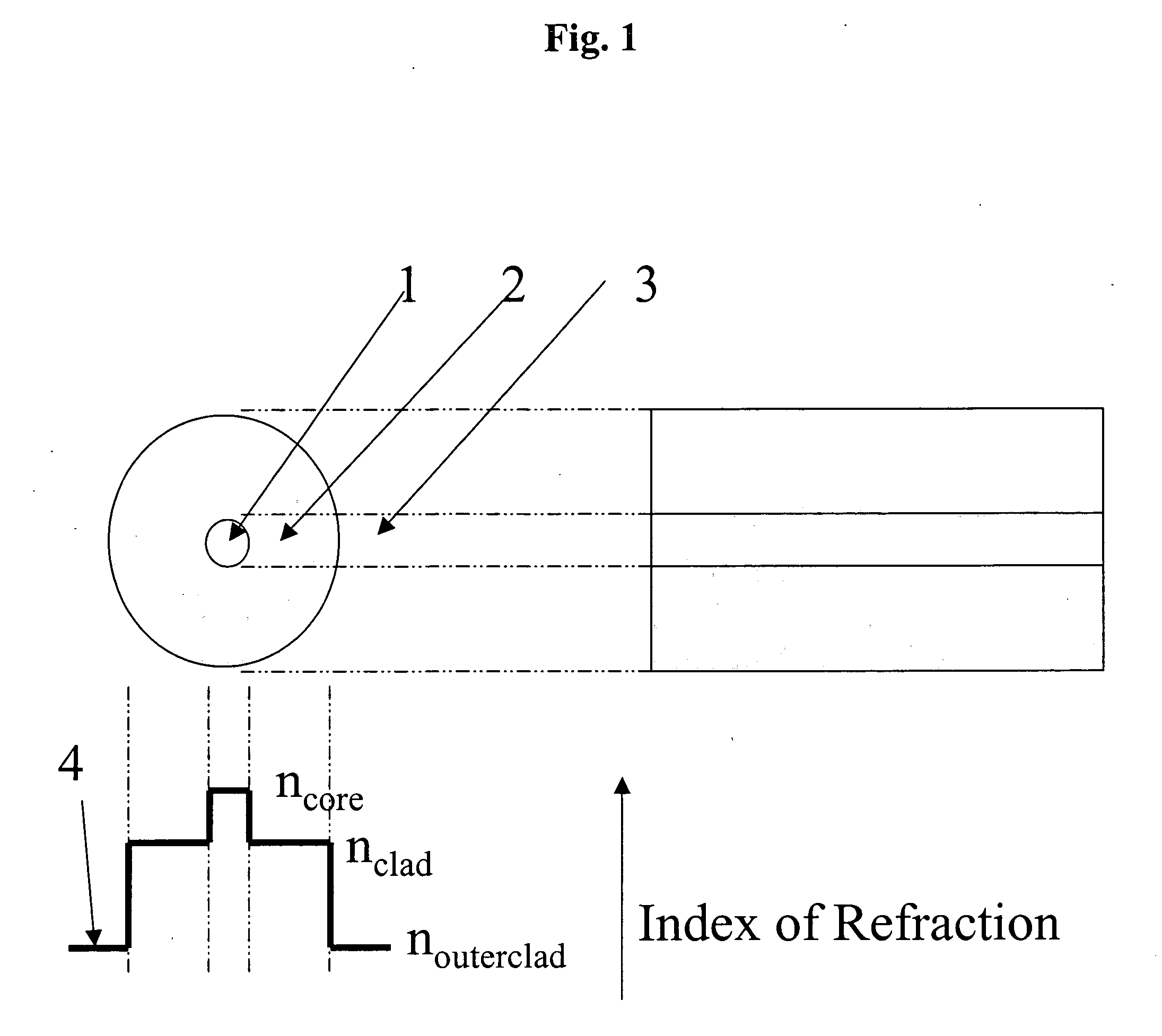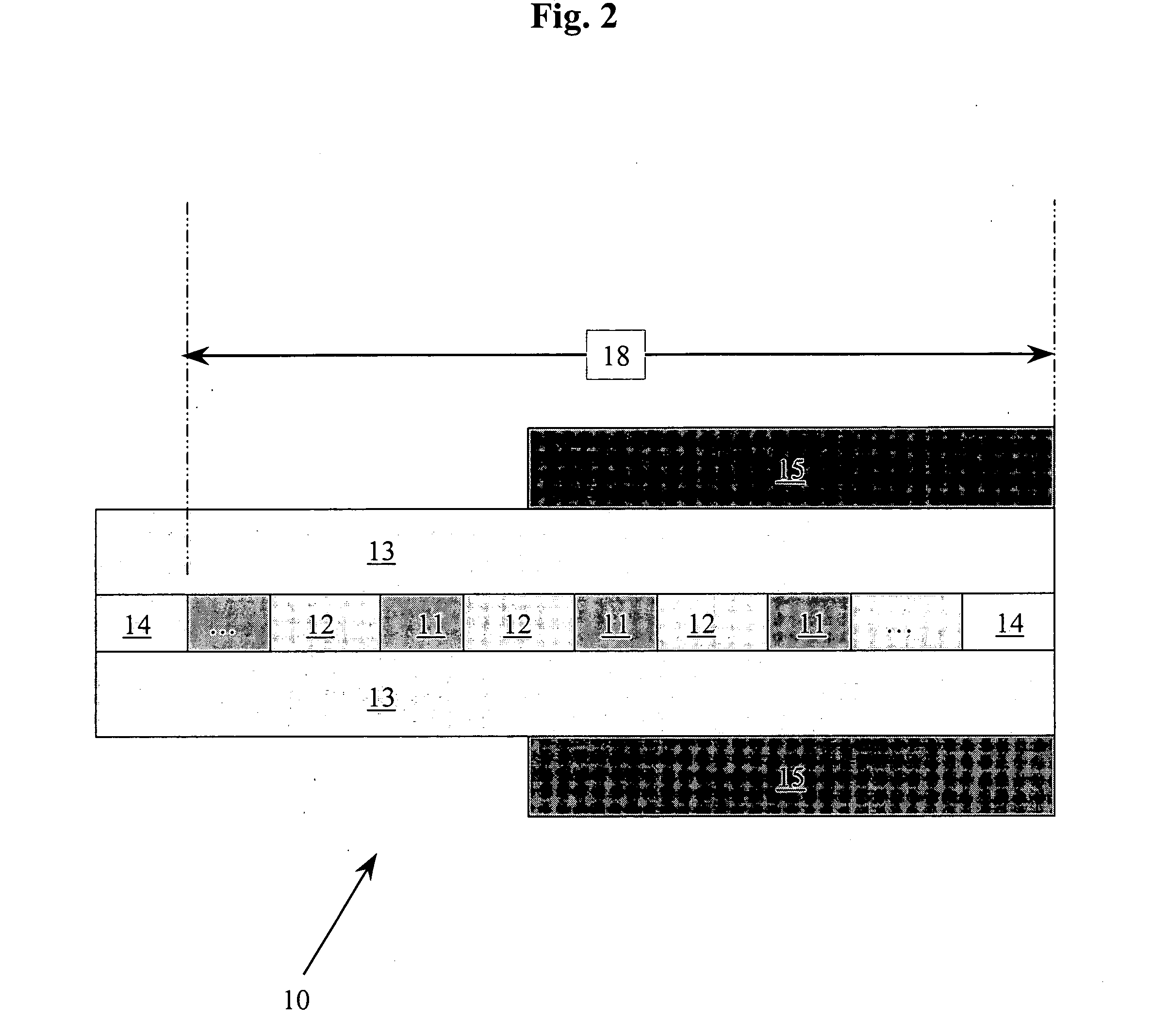Optical fiber/waveguide polarizer and method of fabrication
- Summary
- Abstract
- Description
- Claims
- Application Information
AI Technical Summary
Benefits of technology
Problems solved by technology
Method used
Image
Examples
Embodiment Construction
[0069] A typical prior art single mode optical fiber is presented in FIG. 1 together with a schematic cross-section of the fiber. Three regions within the fiber can be distinguished: [0070] a) the fiber core 1 with refractive index ncore; [0071] b) the fiber cladding 2 with refractive index nclad; [0072] c) the outer fiber cladding 3 with refractive index nouteclad.
[0073] The refractive index profile 4 illustrates the approximate relative magnitudes in refractive index of the three regions.
[0074] When an optical wave propagates along the fiber, the associated electromagnetic field of the optically guided modes extend over the core 1, the cladding 2 and the outer cladding 3 where present. Each mode is characterized by a size, known as the optical mode spot size, which is typically measured between the points where the electromagnetic field intensity is at half the value of the peak intensity.
[0075] The central requirement for ensuring that there is minimal coupling to cladding mod...
PUM
 Login to View More
Login to View More Abstract
Description
Claims
Application Information
 Login to View More
Login to View More - R&D
- Intellectual Property
- Life Sciences
- Materials
- Tech Scout
- Unparalleled Data Quality
- Higher Quality Content
- 60% Fewer Hallucinations
Browse by: Latest US Patents, China's latest patents, Technical Efficacy Thesaurus, Application Domain, Technology Topic, Popular Technical Reports.
© 2025 PatSnap. All rights reserved.Legal|Privacy policy|Modern Slavery Act Transparency Statement|Sitemap|About US| Contact US: help@patsnap.com



